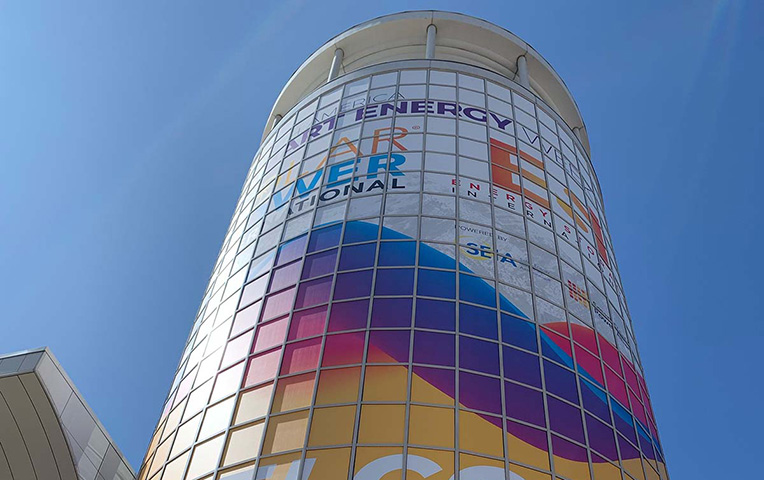[caption id="attachment_7165" align="alignright" width="240"] VP of Engineering Joe Song[/caption]
VP of Engineering Joe Song[/caption]
As solar continues its year-over-year growth, the massive Solar Power International conference (or North American Smart Energy Week, depending on who you ask) provides an annual opportunity for the industry to put on display its newest shiny objects. For solar veterans like Sol Systems VP of Engineering Everything Joe Song, it’s easier to wade through the vast sea of hype and find the reality that sits in the midst. We asked him about his time at SPI 2019 in Salt Lake City.
- What main theme defined this year’s conference for you?
JS: Busy. The industry is just busy, more focused on execution. Past years have been clouded with uncertainty or setbacks, namely Section 201 but also unknowns presented by Illinois, SMART, and other programs that were new and untested. This year, there is more certainty – we know ITC stepdown is ahead of us, the financial impacts of the module and steel tariffs, the outcomes of Illinois, SMART, and other efforts that were all unknowns last year. Hence, people are busy bringing projects to the finish line and safe harboring modules. EPCs, equipment manufacturers, and other pieces of the chain are busy as a result. A lot of business is happening right now. And that’s great news for all of us.
- What was the biggest difference in this year’s SPI from years past?
JS: On a technical front, a lot of what was at one time a “roadmap” or “to be available in 2019” has arrived on the scene. Module advancements such as PERC, Half-cell, bifacial, and Series 6 that were bright and shiny objects last year have now generally been accepted, adopted, and even accustomed to. String inverters are approaching the central inverter power class from 10 years ago or so; this is where inverter advancements are most pronounced.
- What interesting technology trends or innovations did you feel flew under the radar?
JS: Module integrated power electronics. Module manufacturers continue a trend in working with DC optimizers and producing integrated products. This is still cutting edge for now, but perhaps not a huge barrier for success. This is the right direction for this technology and where we might see meaningful impact at a system level in a few years once the technology is more established. It also happens to be the most elegant solution to comply with rapid shut-down requirements.
We are also seeing improvements in balance of systems (BOS) or soft costs efficiency. There continues to be a mindfulness and acknowledgement that BOS cost reductions are a mountain of opportunity. Shoals BLA product is a great example as the benefits are numerous and there is a case that it reduces operating expenditures as well. Things like this just need field time to find maturity. Trackers that have integrated 2P technology, or simple pneumatics, are also potential solutions for labor reduction. High kW string inverters are another great example.
- What was the general feeling from the industry regarding the its position leading into impending ITC stepdown?
JS: Prepared and ready to proceed forward under that plan.
This is an excerpt from the Q3 2019 edition of The SOL SOURCE, a quarterly electronic newsletter analyzing the latest trends in renewable energy development and investment based on our unique position in the solar industry. To receive future editions of the journal, please subscribe.
ABOUT SOL SYSTEMS
Sol Systems, a national solar finance and development firm, delivers sophisticated, customized services for institutional, corporate, and municipal customers. Sol is employee-owned, and has been profitable since inception in 2008.
Over the last ten years, Sol Systems has delivered 800 MW of solar projects for Fortune 100 companies, municipalities, universities, churches, and small businesses. Sol now manages over $650 million in solar energy assets for utilities, banks, and Fortune 500 companies.
Inc. 5000 recognized Sol Systems in its annual list of the nation’s fastest-growing private companies for four consecutive years. For more information, please visit www.solsystems.com



